Every now and again, a game quietly whispers from the shelf, “You’ve picked me up on so many occasions. You’ve admired the cover. You’ve read the back. All the while, you’ve smiled. Don’t you think it’s time we got acquainted?”
Oh, Arboretum. Can you forgive my undue procrastination?
A delightful walk through a carefully cultivated garden, Arboretum nearly caused me to let down my guard as I fell captive to its beauty. But as the endgame approached, just as I prepared to celebrate my efforts, this botanical puzzle revealed its true plot and laid bare its most unfriendly secrets.
And I loved it even more.
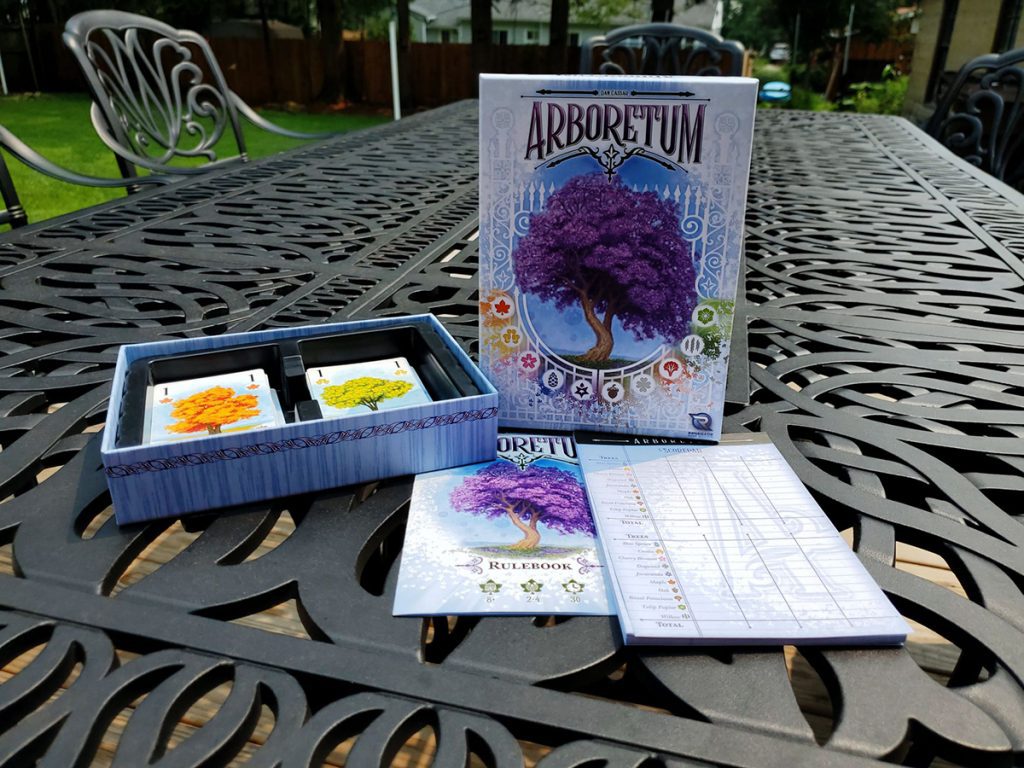
Arboretum pits two to four arbor enthusiasts against each other in a contest of wits, tile laying, and hand management with a hint of set collection. The rules are simple enough to obscure the tension that makes this little card game a gem.
The cards from the Renegade reprint feature illustrations from Beth Sobel (of Wingspan and Calico fame). Every tantalizing species card includes a matching icon for easy identification, as well as a name. At first, I singled out the Blue Spruce as my favorite. As the number of plays increases, I find myself more enamored with each of the cards. It would be impossible to oversell the game’s overall visual appeal.
Setup & Gameplay
Setup is a breeze. Each player count uses a specific number of tree species – suits – which are numbered 1 through 8. Though the rules do not require it, we’ve enjoyed laying out the ten possibilities and drafting the collection for the game so that everyone can hold out hope that they’ll work with their favorite tree. Once the collection is complete, the cards are shuffled and dealt, seven to each player with a common draw pile set face-down in the middle of the table.
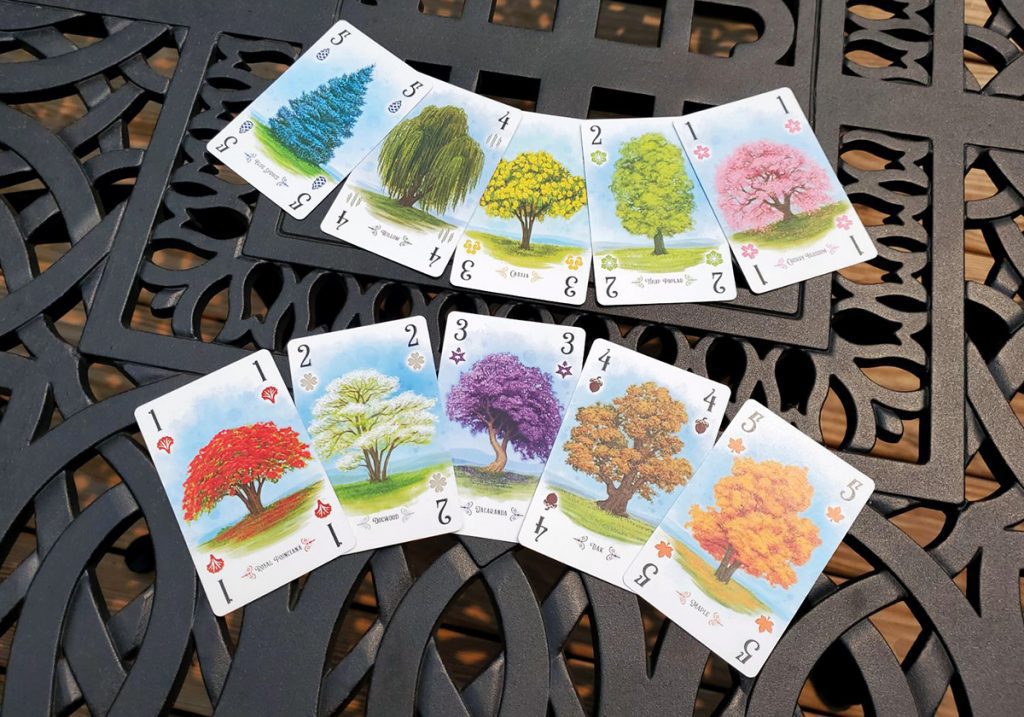
Player turns are simple, but each decision holds a wealth of strategy: 1) Draw two cards, either from the face-down pile or the accumulating face-up discard piles from each player. 2) Play one card into your personal arboretum, orthogonally connected to a previously played card (the first turn, obviously, allows an exception). 3) Discard one card, face-up, into your personal discard pile. Play continues in this vein until the final cards are drawn from the center draw pile, triggering the final turn of the game.
Scoring
Arboretums are then scored according to the paths created for each species of tree. In order to be a legitimate path, the following criteria are laid out: 1) The path must begin and end with the same species. Cards in between can be of any species. 2) The path must be traced in ascending order along an orthogonally connected path. 3) Individual trees cannot serve as the beginning or ending card for more than one path. In addition, you are only able to score one path of each species.
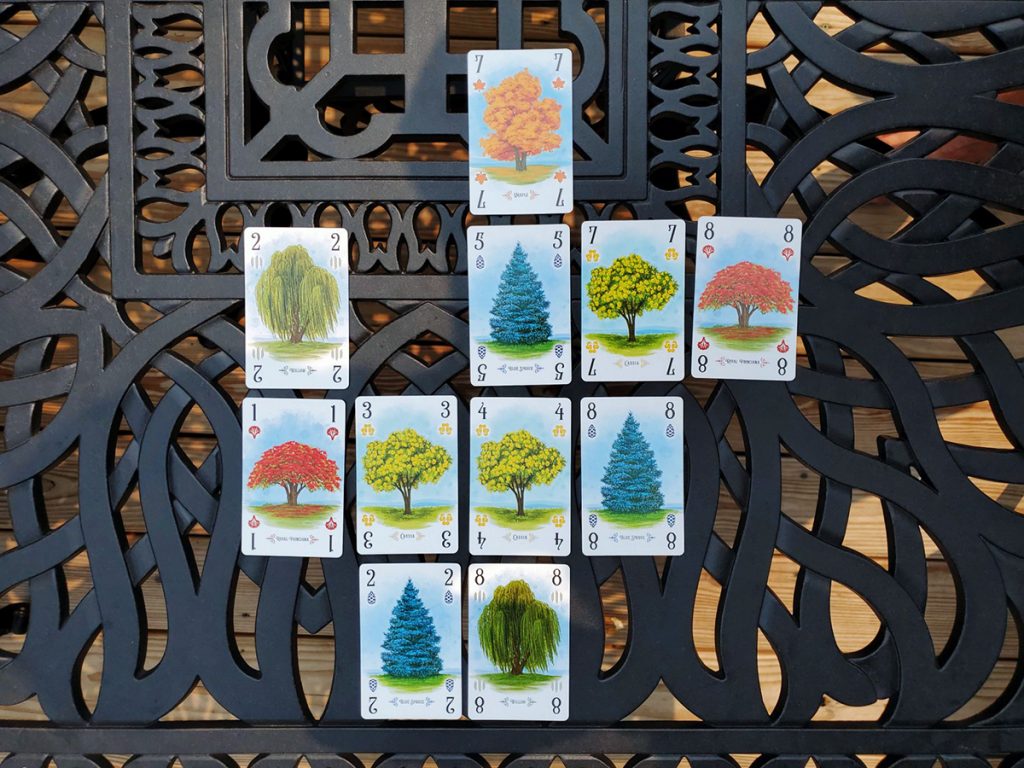
By the numbers, players receive one point for each card in a given path. If a player manages to create a path consisting entirely of one species, that path’s score is doubled before adding bonuses. Paths with a One at the head are worth a bonus point. Eights at the end are worth two points.
The Twist (of the Dagger)
All of this is well and good, but the devious twist of the endgame is not on the table; it’s in the hand. Visible beauty must be mirrored by hidden value. In order to score points for the various colorful and gorgeous paths in your arboretum, you must be holding cards – precious cards of the same species that could have helped you on the table – in your hand. Not only that, but the cards in hand must match or exceed the value of every other player for that species in order to earn the right to score the paths so tenderly cultivated!
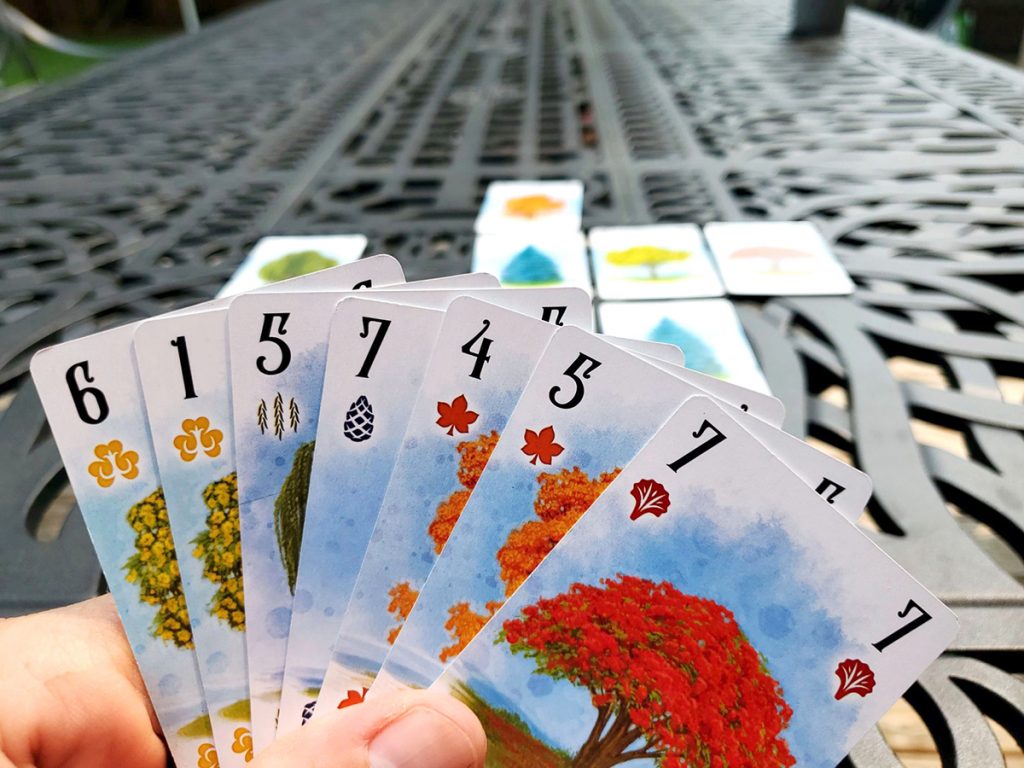
There is room among the leafy trees here for treachery. As the scoring proceeds, each player reveals the contents of their hand, putting every individual botanical dream to the test. Not every player can necessarily score a given species. Of course, everyone must be concerned with scoring their own trees, but with seven cards in hand, there is seemingly always a slot available for holding a card that can prevent another player from scoring their mighty grove. In an unexpected turn of the rules, eights are rendered worthless in the hand when the one is held by the opposing player. Sevens, then, can be lethal at times.
Once friendships and family ties have been strained by the uncovering of secret sins, the points are tallied and a winner is declared. If your experience is like mine, you’ll then choose a new set of species and go at it again.
Parting Thoughts
Arboretum is just the right kind of interactive. Players cannot afford to ignore the table. Every discard is a potential swing in the game’s outcome, no matter who picks it up. Every draw either pushes the game downhill toward its conclusion or drags it out. As the game nears its conclusion, the knowledge of the cards in play increases while players wrestle through the agony of deciding which consequential cards to hold and which to send out into the wild. For all these reasons, there is little downtime.
The game was a hit with the family, drawing in children and parents alike. The age recommendation (8+) is spot on, though I tend to think the strategic choices will be difficult for anyone under the age of ten. The timing on the box is accurate. A four-player game may stretch past 30 minutes if anyone is prone to paralysis, but a 25-minute play is also not out of the question if folks are on the ball.
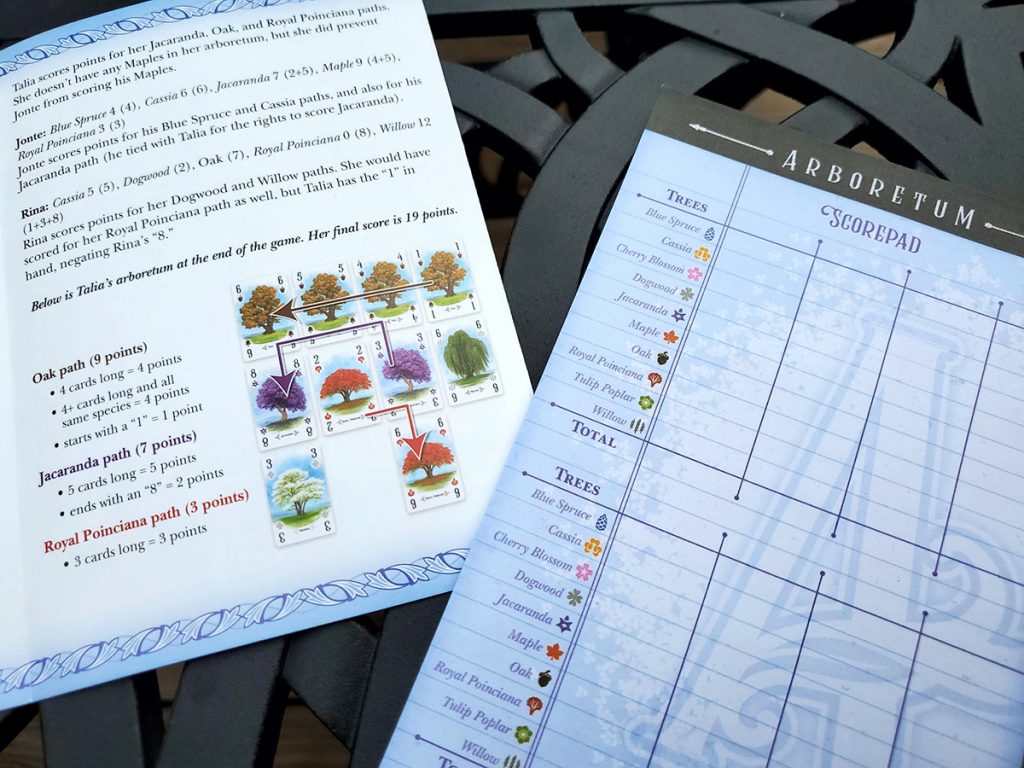
The path is laced with opportunities for cruelty. I would imagine every group will play the game according to its personality. Some will aim purely to achieve, exuding a fairly positive vibe. Some will shoot to kill. Ideally, the endgame will hold one or two stunning reveals as the score swings like a blighted pendulum, leaving one supremely happy tree enthusiast standing tall.
Personalities aside, though, Arboretum is delightfully tense. I appreciate games in which every decision feels important, but no one decision feels like the entire game hinges upon it. There is enough wiggle room in this game that it needn’t be so stressful, but the game makes its weight known for half an hour. I like that.
The rulebook brands Arboretum a “peaceful haven” with a “competitive heart.” I agree on both counts. My only regret is waiting so long to get acquainted.
One year later…
Arboretum doesn’t come to the table often, especially with all the games that walk through the front door, but it comes in longer waves. We rarely play just one game, with a single endeavor quickly turning into a week of engagement. I’ve not found a game that creates the same highs and lows with such fluidity and ease. Our most common player count seems to be three. Even re-reading the review makes me want to pull it into our active stack. At this point you can grab a copy for less than $15 with relative ease. It’s worth every penny. These trees have earned a lasting place in the collection.











